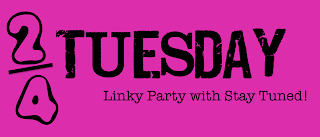Here are 4 things going on in my music room this week.
1. 1st Grade Chant: Way Up High in the Apple Tree
Many apple, pumpkins, and leaf songs and chants are being heard in music rooms this time of year. Way Up High in the Apple Tree is one that the 1st graders are learning this week. (How can I resist that extra vocal exploration as the apples come doooooooown?)
2. Book : The Tailor and the Mouse
I love reading/singing picture books to all the grade levels I teach, even 5th and 6th graders.
This John Feierabend adaptation is beautifully illustrated and there is enough sub text in the pictures to really engage the older kids.
The Tailor and the Mouse is the first dance my 5th graders learned this year. They love the natural minor song and enjoy singing the "Hi diddle um kum feedle!" response. After a couple of class periods of singing and playing the game, we read the book.
(For the song and dance, please visit my website The Kodály Aspiring Music Classroom.)
(For the song and dance, please visit my website The Kodály Aspiring Music Classroom.)
3. Yan/Jean Petit: a french cummlative dance
Sanna Longden's multi-cultural dance resources are a must have. If you ever have the opportunity to participate in one of her workshops, you should go! (While I love the Rhythmically Moving series, nothing beats hearing authentic instruments play these pieces.)
In this simple french dance, the children add on "showing off" moves after parading in a circle. Yan/Jean Petit is on Sanna's 1st CD and 2nd DVD.
Sanna Longden's multi-cultural dance resources are a must have. If you ever have the opportunity to participate in one of her workshops, you should go! (While I love the Rhythmically Moving series, nothing beats hearing authentic instruments play these pieces.)
In this simple french dance, the children add on "showing off" moves after parading in a circle. Yan/Jean Petit is on Sanna's 1st CD and 2nd DVD.
4. Flashcard Game: Read and Remember
This is one of my favorite flashcard games and I'm doing this game with 3rd-6th grade this week. (I would not recommend this game for K-2.) You can find many variations of this flashcard game in several Kodály books. It's one of those less than 5 minute games.
Part of music literacy is teaching students to read slightly ahead of where they singing/playing. Once they understand it, the students really enjoy this challenge.
The Game
This is one of my favorite flashcard games and I'm doing this game with 3rd-6th grade this week. (I would not recommend this game for K-2.) You can find many variations of this flashcard game in several Kodály books. It's one of those less than 5 minute games.
Part of music literacy is teaching students to read slightly ahead of where they singing/playing. Once they understand it, the students really enjoy this challenge.
The Game
Starting with at
least four rhythm flashcards, show the first card and ask students to memorize the first card. Then hide the first card behind the others. The class speaks the rhythm (or sings the sola ) of
the first card, (by memory,) while looking at and memorizing the second card.
This procedure is repeated until all cards have been performed.
Thank you, Steph, for hosting the 2/4 Tuesday Linky Party.
Please head over to Stay Tuned! for more music class ideas!















